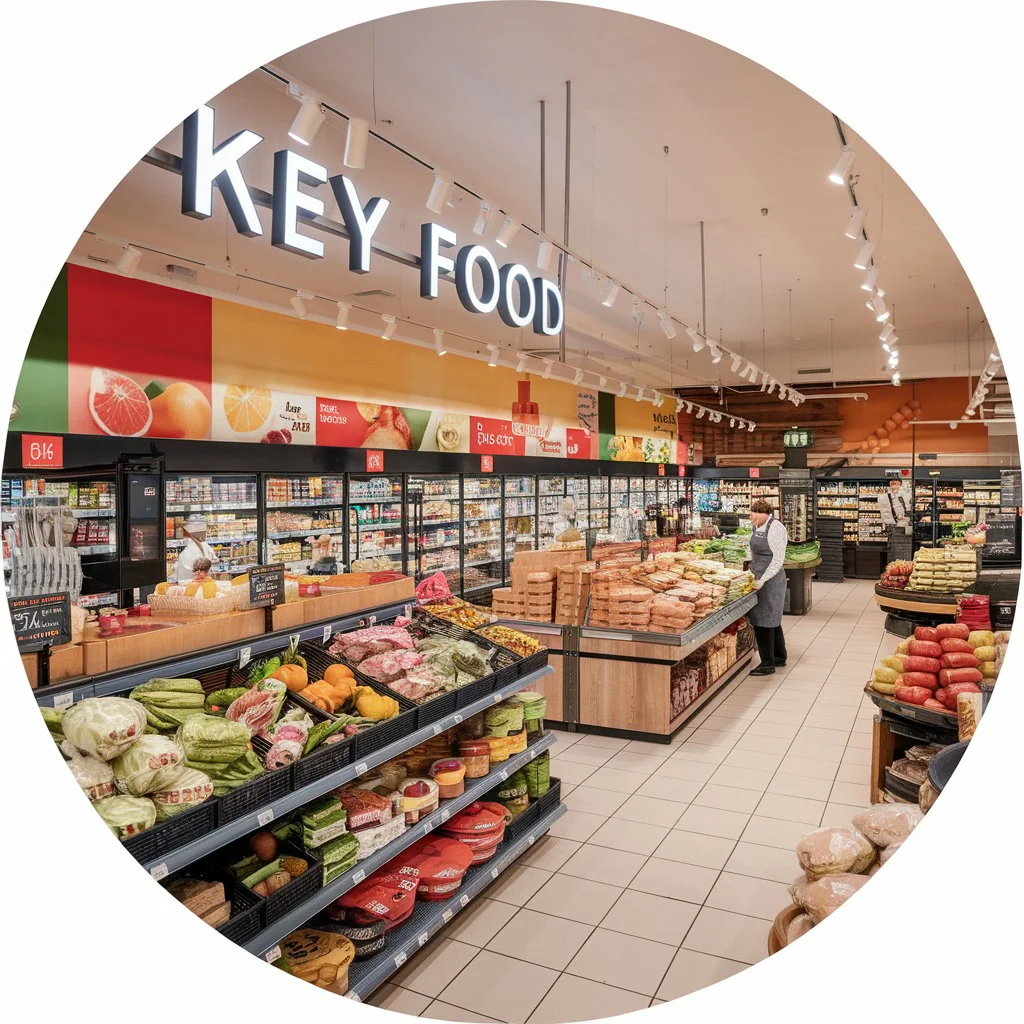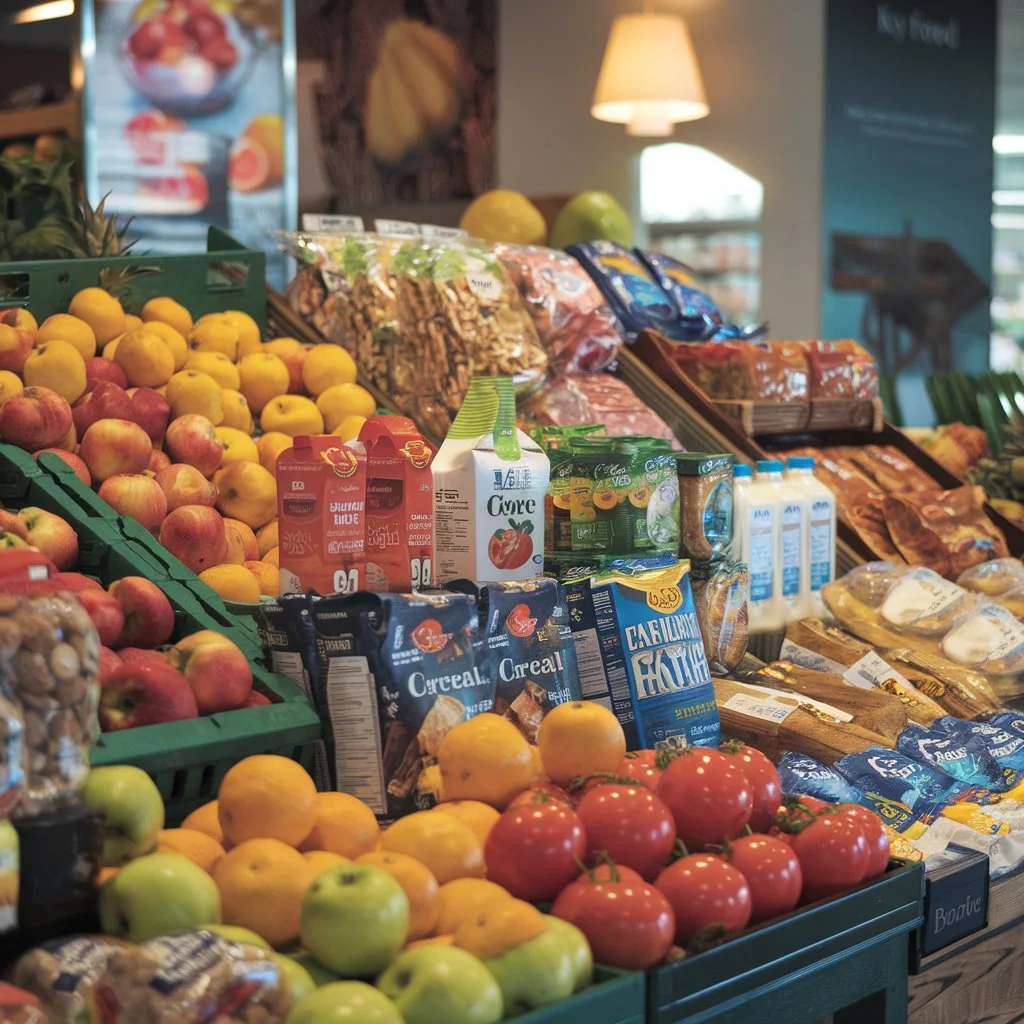Food systems around the world are under increasing pressure. Climate change, food waste, and resource depletion are growing concerns. To address these issues, a shift is needed in how food is produced, consumed, and disposed of. One such solution gaining momentum is food circularity. This model challenges the traditional linear food system, focusing instead on sustainability, resource efficiency, and waste reduction. In this article, we will explore the key concepts of food circularity and its role in creating a more sustainable food system.

If you want to know more about Open Farm Dog Food then checkout our last blog post.
What is Food Circularity?
Food circularity is a concept that draws from the circular economy model. Unlike the traditional “take make dispose” approach, food circularity aims to create a system where resources are used efficiently, waste is minimized, and products are reused or recycled. This circular model focuses on closing the loop at every stage of the food system production, consumption, and disposal. So that the lifecycle of food becomes regenerative rather than wasteful.
The ultimate goal of food circularity is to create a sustainable, resource efficient food system. This system reduces the negative environmental impacts associated with food production while ensuring that food is still nutritious, affordable, and accessible.
Principles of Food Circularity
Several core principles guide the idea of food circularity. These principles focus on sustainability, waste reduction, and optimizing the use of available resources.
1. Designing for Durability and Reusability
One of the first steps in a circular food system is designing food products and packaging that are durable, reusable, or recyclable. Many products today are designed for single use, leading to an enormous amount of packaging waste. Circular food systems aim to reduce this waste by using materials that can be reused or composted. For example, edible packaging made from seaweed or rice can replace plastic packaging. This ensures that packaging waste is minimized and that natural resources are conserved.
2. Maximizing Resource Efficiency
Circular food systems focus on using fewer resources to produce the same amount of food. In traditional food production, a lot of resources like water, land, and energy are wasted. Precision agriculture, which uses technology to monitor soil conditions, weather, and plant health, can help optimize the use of resources. For instance, farmers can adjust irrigation schedules based on soil moisture levels, reducing water waste. Additionally, reducing energy consumption in food processing and transportation can lower the carbon footprint of food production.
3. Reducing Food Waste and Encouraging Upcycling
One of the most significant issues facing global food systems is food waste. It is estimated that about one third of all food produced worldwide is wasted. In a circular food system, the goal is to prevent this waste by reducing overproduction, improving storage methods, and encouraging consumption of surplus food. Upcycling is another key component. Food waste and by products can be transformed into new products or ingredients. For example, fruit peels and cores can be used to make smoothies or jams, while leftover coffee grounds can be used in fertilizers.
4. Regenerative Agriculture
Regenerative agriculture plays a crucial role in food circularity. This farming method emphasizes restoring soil health, increasing biodiversity, and reducing reliance on synthetic chemicals. Practices like crop rotation, agroforestry, and cover cropping help maintain the land’s natural fertility. These practices promote a healthy ecosystem while reducing the environmental impact of farming. Regenerative agriculture can also sequester carbon in the soil, helping to mitigate climate change.
5. Sustainable Consumption
Circular food systems also emphasize changing consumer habits. Sustainable consumption includes buying local, seasonal foods and minimizing food waste at home. A circular diet encourages eating plant based foods, as they generally have a lower environmental footprint than animal products. Additionally, consumers can adopt practices like using leftovers, buying in bulk, and avoiding food waste. Reducing food waste at the consumer level can have a significant impact on overall food waste reduction.
Benefits of a Circular Food System
Food circularity offers numerous environmental, economic, and social benefits. These benefits stem from optimizing resources, reducing waste, and creating a more sustainable food system.
1. Environmental Benefits
The environmental benefits of food circularity are clear. By reducing food waste, conserving resources, and adopting regenerative agricultural practices, the environmental impact of food production is significantly lowered. Circular food systems can reduce greenhouse gas emissions by minimizing food waste in landfills and improving the efficiency of food production. Regenerative farming methods also help sequester carbon in the soil, mitigating climate change.
2. Economic Opportunities
Circular food systems can drive economic growth. They create new opportunities for businesses that focus on waste reduction, upcycling, and sustainable production. For example, companies that recycle food waste into valuable products like compost or animal feed can generate new revenue streams. Additionally, adopting resource efficient practices can reduce operational costs for farmers and food producers, leading to long term savings.
Circular food systems also promote local food economies. By focusing on local, seasonal produce, businesses can reduce transportation costs and create jobs in local communities. This approach strengthens local food systems and contributes to greater food security.
3. Food Security
Circular food systems contribute to food security by increasing the resilience of food systems. Regenerative agriculture methods help make farming more sustainable and resistant to climate change. By reducing dependency on global supply chains, local food systems can become more self sufficient. Sustainable consumption practices, such as buying local and reducing food waste, ensure that food is more accessible and affordable.

If you want to know more about Open Farm Dog Food then checkout our last blog post.
4. Waste Reduction
Reducing food waste is one of the most immediate benefits of food circularity. Food waste not only wastes valuable resources but also contributes to environmental degradation. By creating systems to repurpose or recycle food waste, circular food systems ensure that fewer resources are wasted. This is achieved through practices such as composting, upcycling food scraps, and reducing packaging waste.
Challenges to Implementing Food Circularity
Despite its numerous benefits, the transition to a circular food system faces several challenges. These challenges include economic, technological, and social barriers.
1. High Initial Costs
One of the biggest barriers to adopting circular food practices is the initial cost of implementation. Transitioning to sustainable farming practices or redesigning food packaging to be reusable or recyclable requires investment. Small and medium sized food producers may struggle to bear these upfront costs. While circular practices can lead to long term savings, the initial financial burden can deter businesses from making the transition.
2. Consumer Behavior
Shifting consumer behavior is another challenge. Many people are not yet accustomed to sustainable consumption practices like reducing food waste or buying locally grown produce. Educating consumers about the benefits of food circularity is essential to encourage changes in habits. Without widespread consumer support, the full potential of circular food systems cannot be realized.
3. Technological Limitations
Some aspects of food circularity, such as upcycling food waste or developing sustainable packaging, require advanced technologies. These technologies may not yet be widely available or economically viable. Research and development are needed to improve food waste processing methods, create new packaging solutions, and develop more efficient farming technologies. Without ongoing innovation, the growth of food circularity may be limited.
4. Supply Chain Coordination
The successful implementation of a circular food system requires cooperation across the entire food supply chain. This includes farmers, food manufacturers, retailers, and consumers. Achieving such coordination can be challenging, especially when different stakeholders have varying priorities. Ensuring that food waste is properly collected, sorted, and reused requires close collaboration between all actors in the food system.
Real World Examples of Food Circularity
Several companies and initiatives are already embracing food circularity with success. One example is the app Too Good To Go, which allows consumers to purchase surplus food from restaurants, cafes, and grocery stores. This reduces food waste by making perfectly good food available to those who need it.
Another example is the company agriProtein, which uses insect larvae to convert food waste into high protein animal feed. This innovative approach not only reduces waste but also provides an alternative protein source for livestock.
In the field of regenerative agriculture, organizations like the Rodale Institute in the U.S. are promoting sustainable farming methods that restore soil health, reduce the use of chemical inputs, and enhance biodiversity.

If you want to know more about Open Farm Dog Food then checkout our last blog post.
Conclusion
Food circularity offers a promising solution to some of the most pressing challenges in global food systems. By focusing on reducing waste, increasing resource efficiency, and promoting sustainable consumption, circular food systems can help create a more sustainable, resilient, and equitable food system. While there are challenges to overcome, such as initial costs, consumer behavior, and technological limitations, the benefits of food circularity are undeniable. Through innovation, collaboration, and a commitment to sustainability, the food industry can transition to a more circular model that benefits both the environment and society.



Pingback: Fast food operator chapter 11: A Critical Lifeline or a Path to Closur